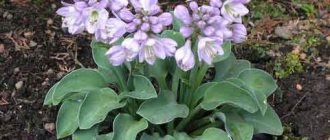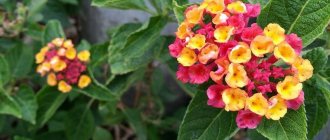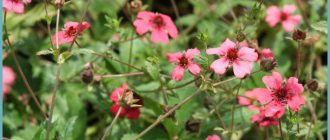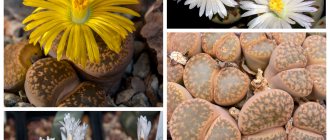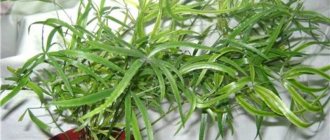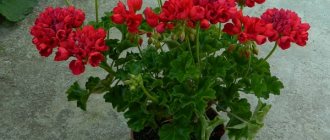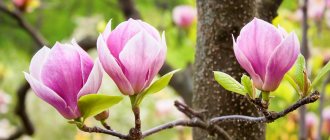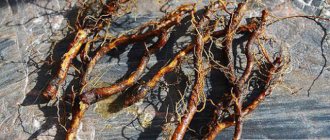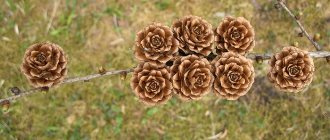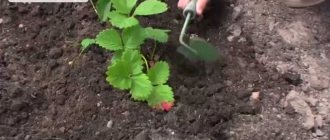Eucalyptus propagation
These trees are cross-spreading plants. The main type of propagation is, of course, seeds. The seeds are small in size. They are sown in the soil in winter. You should not plant the seeds too deep, it is better to a depth of up to 5 mm. The place where the planting took place should be covered with film and placed in a sunny place. You need to water in moderation, otherwise the seeds may die from strong humidity. Seeds germinate within 5-8 days. Eucalyptus trees can also be propagated by cuttings, which are usually taken from young trees.
Reproduction
Lemon eucalyptus can be easily propagated from seeds. Eucalyptus seeds take root well if given proper care. In addition, eucalyptus can be propagated using the upper cuttings of the plant. However, they often do not take root. Therefore, it is recommended to grow from seeds, and they can easily be found in any flower shop. The size of a normal seed should be between 1 and 2 mm.
The most optimal time for sowing seeds is considered to be the end of winter and the beginning of spring. The soil that is prepared for germinating seeds must be sufficiently loose and porous. A mixture of two soils, namely sand and turf, is perfect for this. Pots prepared for sowing must have special drainage holes.
How to plant such a plant? The seeds should be sown on the soil, which must first be properly moistened, then the container with the existing crops is covered with film or glass. It is very important that at the time of germination of grains, thermal and temperature standards are observed, namely, the light should be diffused, and the air temperature should be heated to +20...+25°C. Until the first shoots begin to appear in the soil, it is necessary to maintain a certain soil moisture. It must be remembered that an insufficient amount of moisture for a completely young and not yet fully mature sprout can be catastrophically undesirable and even harmful. For watering purposes, it is best to use a spray bottle. The first shoots of lemon eucalyptus most often appear a week after sowing. There are times when the germination of some seeds may take longer.
Immediately after you begin to notice that the first few leaves appear on the sprouts, you should start picking the plants. Seedlings should be planted 1 sprout at a time into separate pots, the diameter of which should not exceed 7 cm.
Flowering and fruiting of a eucalyptus tree
Flowering in eucalyptus trees begins from 2 to 10 years. Flowering usually occurs in late spring or early summer, but there are differences depending on the type of eucalyptus. The buds usually appear first, and then over the course of three months they begin to gradually open. They also experience fruit ripening. Ripening usually lasts one year, maybe a little longer, depending on the climate. Seeds ripen in the fruits. Seeds can be planted for ten years; they retain their viability for a very long time. There are cases when seeds are stored for forty to fifty years.
Wintering eucalyptus
In late autumn, plants gradually become accustomed to lower average daily air temperatures. The optimal temperature in the room during the day is 16 o C, at night it is possible to reduce the temperature to 12-14 o C. At the same time, reduce the number of irrigations and the volume of water supplied, bringing the nature of irrigation to very moderate. It is necessary to ensure that the plant does not lose turgor, dry out or wrinkle.
At this time, the tree can undergo corrective pruning. In this case, all branches are slightly shortened to a well-developed bud. Branches that cross or grow at an acute angle are removed. Pruning trees helps improve the nutritional conditions of each branch and each bud, which can ensure the formation of buds and flowering of eucalyptus, although this is an extremely rare occurrence indoors. They try to keep the entire crown of the tree very compact. Excessive growth of shoots can cause the plant's center of gravity to be shifted and it to simply tilt or even fall out of the container.
Beneficial features
Nowadays, eucalyptus trees are often planted artificially in order to drain swampy areas. Eucalyptus trees drink a lot of water. They are called "pumps". They can not only consume water in large quantities, but also evaporate it. A tree can evaporate about 300 liters of water. Eucalyptus wood is of very good quality and does not rot. It is used for sheathing ships and other instruments that are in direct direct contact with water. Eucalyptus leaves produce essential oil. The composition of the oil is very complex, as it contains more than forty components. In many countries, the oil is used to repel insects. Therefore, when you have to go into the forest, do not forget to take essential oil. Leaves are collected no earlier than November. Then they are dried at a temperature of 40 degrees. Different types of eucalyptus are collected separately.
Uses of lemon eucalyptus
Oils contained in large quantities in the foliage of the plant are successfully used in medicine and cosmetology. It has disinfectant, astringent and bactericidal properties.
Up to 3% of essential oils are contained even in the dried leaves of the plant, which is why they are added to teas. For medicinal purposes, eucalyptus leaves are used to prepare decoctions and infusions.
Lemon eucalyptus essential oil has disinfectant, astringent and bactericidal properties.
Lemon eucalyptus oils alleviate pain in respiratory diseases, so they are added to inhalation products. Preparations containing essential oils are used to treat cervical erosion, herpes, and fungi.
Substances contained in plant fiber have high disinfecting properties. Medicines based on eucalyptus are used to relieve pain from lumbago, rheumatism, and neuralgia.
Due to its deodorizing properties, the oil is used in the manufacture of flavoring sachets. Also, the aroma, pleasant to human perception, is destructive to insects, so eucalyptus oil is used as a means to combat ants, mosquitoes and other sucking pests.
Meaning
As was said a little earlier, wood is very dense, so it is used for the construction of ships, sleepers, and can also be used for making paper. It is the wood that is used to make paper. Eucalyptus trees are also used for medicinal purposes. For this, only three types of trees are used: ball, ash and twig. It is known that Spain produces liqueur, which is usually used to prevent fever.
Eucalyptus (Eucalýptus) is a genus of plants belonging to shrubs and trees that belong to the Myrtaceae . Eucalyptus is native to Australia and the island of Tasmania, but due to its numerous beneficial properties it was introduced and began to be cultivated in many countries.
Eucalyptus got its name thanks to the famous French botanist Charles Louis Léritier de Brutel, who decided to combine two Greek words: “good, good,” pronounced “eu” and “hide,” which corresponded to “calypto.” This desire, unusual at first glance, is easily explained by the plant’s ability to hide its flower buds under the cups of leaves.
Eucalyptus is capable of releasing phytoncides into the air, which kill pathogenic bacteria and viruses, fungi, its foliage contains a large amount of essential oil, which is now successfully extracted and is widely used, and eucalyptus has been planted in many countries with this problem for its ability to drain swampy areas, After all, it is capable of drawing in up to 300 liters of water in just one day! In some areas of Australia, the aborigines believed that even one drop of eucalyptus oil could protect an entire home and all the people in it from evil unclean spirits. Thanks to all this and many other beneficial properties, eucalyptus was nicknamed the “wonderful tree.”
Read also: How can you replace margarine in baking?
Eucalyptus has a very amazing ability to turn the surfaces of its leaves towards the sun with its ribs, thereby reducing the area of moisture evaporation, which is why the tree survives in hot, arid climates. This feature was also noticed by European colonists in the 18th century, who, having visited eucalyptus forests for a long time, could not understand why such huge trees did not cast an appropriate shadow. The great writer Jules Verne also wrote about this in his work “The Children of Captain Grant.”
In nature, this miracle tree can reach a height of up to a 50-story building, which is no less than 100 m in height, but at home, eucalyptus reaches only 2 m, then they try to limit its growth.
Medicinal properties
Indoor eucalyptus releases phytoncides that cleanse the air of viruses and bacteria.
The leaves contain essential oil that has powerful antibacterial and antiviral properties. The leaves of the plant are used to prepare oils, infusions and alcohol tinctures.
Eucalyptus is a home plant that is often used to treat abscesses, furunculosis, purulent mastitis and various ulcers. Decoctions of eucalyptus leaves can be used for inhalation for acute respiratory infections and gargling for throat diseases and various problems in the oral cavity.
Note! The plant will only be beneficial if you apply eucalyptus leaves and products prepared from them externally in the form of lotions, ointments or rinses. Ingestion may cause poisoning.
Bright green eucalyptus leaves
For your information! Eucalyptus was first grown in Australia at the end of the 18th century. The eucalyptus tree came to Russia thanks to the botanist A. N. Krasnov in the early 80s of the 19th century. It took breeders more than 50 years for it to take root.
Eucalyptus species:
- Eucalyptus gunnii (Eucalyptus gunnii Hook.f.) - is a fast-growing tree, has a trunk that is colored pink-orange. The average growth per year reaches about 50 cm.
- Eucalyptus viminalis (Eucalyptus viminalis).
- Lemon eucalyptus (Eucalyptus citriodora Hook) - has a pleasant foliage aroma, with notes of lemon, mint, lemon balm and verbena.
- Eucalyptus globulus (Eucalyptus globulus).
Trimming
To curb the growth of eucalyptus in height, it is necessary to prune it annually in spring. The main trunk of the tree should be trimmed to the desired height.
The renewed eucalyptus will begin to produce young shoots, forming a luxurious bush. For better bushiness, it is recommended to pinch out fresh shoots.
As the eucalyptus grows, it may be necessary to trim the roots at the time of replanting. Thus, the tree is limited in growth if conventional pruning does not help.
By pruning the roots, you can also adapt the plant to a small pot when growing using the bonsai technique .
About caring for eucalyptus:
Temperature: For eucalyptus, the optimal temperature is 20-25 °C; in winter it is advisable not to fall below 10 °C, although the plant can withstand even light frosts. Eucalyptus loves an influx of fresh air, so the room in which the plant grows should be regularly ventilated, but avoid drafts.
Lighting: the tree loves good lighting, so it is advisable to place it next to a south window, gradually adapting to the sun's rays, but it will not feel bad in the west and east. In winter, it is necessary to place the pot with eucalyptus in the brightest place in the house. In summer, the plant can be kept on the veranda or in the garden, choosing a place protected from drafts.
Watering: During the period of active growth in spring and summer, eucalyptus needs abundant watering, without drying out the soil. In winter, watering is reduced and carried out only after the top layer of soil has dried 2-3 cm deep. After watering, the water must be drained from the pan. Watering is carried out with soft warm water.
Air humidity: Eucalyptus does not like spraying; it does not need it, since it grows normally even in the usual dry air of the apartment.
Fertilizers : Apply during the period of active growth in spring and summer. Fertilize eucalyptus 1-2 times a month with special complex fertilizers for indoor plants. Fertilizer for a tree should not contain a lot of fluorine, plus it must be taken into account that eucalyptus does not tolerate phosphorus.
Soil: For the tree, a universal substrate is used, to which vermiculite and humus are added to increase nutritional value. At the bottom of the pot you need to make a thick layer of drainage.
Transplantation: Young eucalyptus specimens are replanted annually using the transshipment method, adults only once every 2-3 years, and then only the top layer of soil is changed. When replanting, try not to bury the plant. As the eucalyptus grows, sooner or later the size of the plant will have to be limited, and it may be necessary not only to trim the eucalyptus, but also to trim its roots during replanting. Thus, the tree is slightly stunted in growth.
Pests: In general, the tree is not prone to pests, but with particularly poor care, this can happen; mealybugs and spider mites can settle on it.
When and how does it bloom
In its natural habitat, eucalyptus blooms in spring and summer with small snow-white flowers with a huge number of stamens, collected in umbrella-shaped inflorescences. Indoor lemon eucalyptus blooms very rarely at home.
Eucalyptus blooming with white flowers
Reproduction of eucalyptus at home:
Eucalyptus is propagated mainly by seeds, since the cutting method gives poor results. Sowing of seeds is carried out at the end of February - beginning of March, slightly deepening and sprinkling with earth, under the greenhouse. The optimal temperature for germination is 20-25 °C. The first shoots appear after about a month, but sometimes later, sometimes you need to wait 3 months. Young plants are transplanted when 3 adult leaves appear.
Eucalyptus (Eucalyptus) is one of the fastest growing and largest trees in the world. The genus of culture includes more than 700 plant species, most of which come from Australia.
Currently, eucalyptus trees are widespread in Africa, Asia, South and North America.
Australian eucalyptus began to be grown as a houseplant relatively recently. According to NASA, the plant is one of the top 10 indoor plants that improve indoor air quality.
Read also Pork knuckle with crispy crust
At home, the tree is completely undemanding and, unlike other crops, indoor eucalyptus is extremely resistant to pests.
Varieties suitable for home cultivation
There are many types of eucalyptus (more than 500), but only a few of them are suitable for growing as an ornamental crop. The most popular include:
- globular. It stands out for its beautiful, pyramidal crown and bluish-blue leaves, on the outside of which there is a silvery coating;
- Gunny. Young plants have round, gray-green leaves, which become oblong with a pointed tip as the tree matures;
- Blue baby. Belongs to the dwarf species of eucalyptus. Distinguished by small gray-blue petals;
- fig leaf. It stands out among other varieties due to its rounded small leaves;
- silver or ash. The main difference is the gray oval or round leaves;
- Populus is an ornamental eucalyptus that is capable of forming small berries.
Important! These varieties are not intended for planting in open ground; they can only be grown indoors.
There is also a very beautiful species, the rainbow eucalyptus, which has bark of various colors similar to a rainbow, but it is not suitable for growing as a houseplant.
Varieties of plants in pots on the windowsill
Description of eucalyptus
The plant in nature can reach a height of more than 80 meters, and one of the tallest species is the regal eucalyptus. But in indoor cultivation, the height of the tree rarely exceeds 2-3 meters, since its growth is successfully controlled by pruning and the size of the pot. Exotics can be grown either as a tree or as a low bush.
Home flower eucalyptus
The flowers are solitary, axillary on short petioles or collected in inflorescences of 5-7 flowers. Instead of petals, the flowers produce numerous fuzzy stamens, which can be white, cream, golden yellow, pink, orange or red. Garden decorative forms are distinguished by large flowers and abundant flowering.
Eucalyptus blossom
As the plant grows, three phases of leaf development can be seen: juvenile (young), intermediate and adult. Young leaves are usually very different in shape from mature ones, which is why it was previously assumed that these were different crops.
Some species retain juvenile foliage throughout their lives or only for several years, while in others the transition from one phase to another is almost imperceptible.
Such leaves are round, heart-shaped, ovoid in shape, often similar to gray or green coins. Mature leaves are larger, sickle-shaped, lanceolate, less often rounded, often green, but may be bluish.
Like other members of the myrtle family, eucalyptus leaves secrete essential oil, which is a characteristic feature of the genus. Eucalyptus under natural conditions begins to bloom only after reaching ten years of age.
Pruning and replanting
To curb the growth of the eucalyptus tree and the emergence of new shoots, the main trunk is cut to the required length. By cutting the plant to a length of 50-100 cm, you can form a lush bush. The most favorable time for pruning is spring. To get a beautiful and thick crown, young shoots are pinched.
Indoor lemon eucalyptus at a young age requires annual replanting. Adult specimens are replanted every 3 years. Eucalyptus does not tolerate this procedure very well, so it is better to transplant it into a larger pot by transshipment, which will help avoid damage to the root soil.
When replanting plants over 3 years old, the roots are pruned. Garden varnish is used to lubricate the cuts.
The soil for lemon eucalyptus should be quite loose. The composition of the soil usually includes turf soil, peat, river sand and humus. Be sure to have good drainage at the bottom of the pot.
Indoor varieties and types of eucalyptus
Eucalyptus gunnii (Eucalyptus gunnii) is one of the most popular and easy-to-care home eucalyptus trees. The leaves are elliptical or ovate, dense with a beautiful blue or light blue tint.
A mature leaf on an old tree is more elongated and green, but if you use pruning to maintain the shape of a small, dense bush, the leaves will remain young.
This species differs from others in the absence of a typical eucalyptus aroma. It grows quite quickly, and its shoots produce a sweet sap similar to maple syrup.
Eucalyptus "Blue Baby" is a dwarf varietal form of this species with small round, bluish-blue leaves located along the entire length of thin shoots on short petioles. It can be grown either as a bush or on a trunk.
Eucalyptus "Blue Baby"
Excellent Azura variety for home and garden cultivation. Compact tree with grey-blue, juvenile foliage and strong aroma.
"Azura"
Lemon eucalyptus (Eucalyptus citriodora) . The leaves of this species contain the compounds cytonella and citronellol, which give them a characteristic lemon aroma.
"Dwarf Pink" is a small tree with pink bark, narrow leaves and a lemon scent.
Eucalyptus citriodora
Eucalyptus cinerea (Eucalyptus cinerea) is commonly known as the silver dollar because its foliage turns silver when dry and its leaves are shaped like coins. As a rule, the leaves of this species remain in the young phase of development for a very long time.
Eucalyptus silver
Eucalyptus parvifolia , a feature of this species is its small leaves. Very decorative when grown in bush form.
Eucalyptus parvifolia
Eucalyptus populus (Eucalyptus populus) . Its characteristic feature is numerous small fruits and berries.
Eucalyptus populus
Eucalyptus globulus (Eucalyptus globulus) forms a dense tree crown with slightly long, narrow foliage. Blooms in late summer and autumn.
Eucalyptus globulus
Rainbow eucalyptus (Eucalyptus deglupta) . This species is known throughout the world for its unique, multi-colored bark, painted in all the colors of the rainbow. Although the tree is extremely easy to grow, its tall size means it is not often seen in the home.
Eucalyptus deglupta
Possible difficulties
When growing lemon eucalyptus, gardeners may encounter certain problems. The main ones are elongation of shoots, dull color of leaves and reduction in their size. All this happens due to lack of lighting. To avoid such phenomena, place the plant in a place well lit by the sun or use lamps for growing plants at home.
Due to lack of watering, leaf wilting may occur. Therefore, the owner of lemon eucalyptus needs to follow the care recommendations. Otherwise, the decorative appearance of the tree may suffer. And if the eucalyptus experiences prolonged drought, it may die altogether.
The root system needs no less careful treatment. When replanting a plant into a new pot, you should use a more gentle method - transshipment. This will help the plant quickly adapt to the new location and resume growth.
Also, due attention should be paid to the intensity of lighting. Excessive exposure to sunlight can cause leaf blades to burn.
Home care for eucalyptus
Like any indoor flower, eucalyptus has certain care requirements. This is primarily lighting and proper watering.
Lighting and temperature
For normal development, the culture needs an abundance of sunlight. It is better to place a flower pot near windows facing south or west. In winter, additional illumination with a phytolamp may be required.
The plant loves fresh air, which stimulates the development of new leaves, so from late spring, summer and early autumn it is recommended to grow the tree in the garden or on the balcony, providing long-term access to the sun. However, the plant is sensitive to cold drafts, especially when ventilating the room in winter.
Indoor eucalyptus grows well in normal indoor temperatures year-round, but also tolerates cool growing conditions during the winter. Lowering the temperature in winter to 10 °C allows the plant to enter a dormant state. In a warm room its growth continues.
Watering and humidity
The water requirement of home eucalyptus is not too high, since the hard leaves evaporate relatively little moisture. The tree should be watered moderately but regularly.
Read also Oil drum capacity
Eucalyptus Gunni
The need for water increases on hot summer days. Between waterings, the substrate should dry to a depth of 1-1.5 cm. The culture does not tolerate stagnant moisture, which causes the development of fungal diseases.
In winter, the frequency of irrigation must be reduced, but the earthen clod should not be allowed to dry out completely. The plant reacts to a lack of moisture by drying out and dropping leaves.
The quality of the water used for irrigation is very important - it should be melt, rain or settled water, since the crop does not tolerate chalky tap water. The plant does not require high air humidity, but on too hot days you can spray the leaves.
Fertilizers
If, when replanting, compost is mixed with universal soil, then the young plants will be provided with effective long-term fertilizer for the first year and will not need additional feeding.
Eucalyptus flowers
During the growing season from March to August, older specimens are fed every two weeks with water-soluble fertilizers with minimal phosphorus content but high potassium content. A high dose of nitrogen is also not recommended, as it stimulates shoot growth at the expense of root growth.
Replanting and pruning
Caring for eucalyptus at home includes regular replanting. Fast-growing trees are replanted once a year in the spring using the transshipment method. You can slow down the growth of the plant by using a pot that is only one size larger than the previous one.
Transplantation by transshipment method
The culture prefers light, permeable soil. A mixture of compost, sand and universal soil in a ratio of 2:2:2 works well. Sand can be replaced with perlite. When planting, we must not forget about the drainage layer of fine crushed stone or expanded clay.
Another prerequisite for successfully growing eucalyptus at home is regular pruning, which is carried out in early spring. Some fast-growing species need to be pruned even twice a year.
If you want to get a small, compact bush, then you will need to prune the young plant by more than half. In subsequent years, perform corrective pruning and pinching of tops and side shoots to encourage tillering.
Eucalyptus propagation by seeds
The ability for vegetative propagation in many species of eucalyptus is low, so young seedlings are obtained mainly using seeds.
Seeds are sown on the surface of the wet mixture, 3 seeds in each container. Press tightly and lightly sprinkle with substrate, which is prepared from universal soil, vermiculite and pieces of sphagnum moss in proportions 2:3:1.
The pot of seeds is placed in a plastic bag to prevent moisture loss. The substrate is periodically moistened with a spray, and the greenhouse is ventilated. Usually the first shoots appear after 7-14 days, after which the package can be removed.
Containers with seedlings should be kept in a room with bright indirect light, constant room temperature and remembering to regularly water moderately.
Grown eucalyptus seedling
When 4-6 leaves appear, the tip of the seedlings is pinched. To stimulate tillering. At about the same time, the plants can be transplanted into separate small pots.
Depending on the growth rate, after 10-12 months all shoots can be shortened by 10-15 cm. Young seedlings grow quickly in the open air and can be pruned twice during the summer.
Propagation by cuttings
Young shoots of the current season are cut at the end of summer, 7-15 cm long. The cut should be just below the leaf node. The lower leaves are torn off. The cuttings are placed first in powder to stimulate root formation, and then in an evenly moist mixture of 3 parts compost or universal soil and 1 part perlite.
Eucalyptus cuttings before planting
The container is covered with a transparent bag and placed in a warm place, protected from direct rays. You can water by spraying water on the surface of the soil or placing the container on a tray of water.
Cuttings should form roots in approximately 30 days. Pull gently to feel resistance from the formed roots.
After rooting, remove the bag and place the seedlings in a brighter place, allowing the soil to dry out slightly between waterings. Seedlings are ready for transplanting after new growth begins.
Problems in care
Eucalyptus is resistant to diseases and pests. This is not least due to the essential oils that repel insects. However, spider mites can sometimes appear and can be treated with insecticides.
Falling and discoloration of foliage can be caused by the development of rot due to overwatering.
Yellowing and falling leaves are a symptom of watering with cold and/or calcareous water, which leads to salinity of the substrate.
Transfer
During the period of active growth, young eucalyptus requires an annual transplant. The most suitable time for this is spring, when new leaves are actively growing.
Note! Mature plants that are more than three years old are replanted every three years using the transshipment method.
The transplant is done as follows:
- Eucalyptus is watered in advance to make it easier to remove from the old pot.
- Prepare a larger pot.
- A drainage about 5 cm thick is made at the bottom of the container, and a small layer of earth is poured on top.
- The tree is removed from the previous pot, lightly shaking off the old soil from the roots.
- Inspect the entire root system, cutting off all damaged and rotten roots.
- The cut areas are sprinkled with charcoal or activated carbon.
- The plant is placed vertically in the pot and soil is added.
- Water with warm purified water.
An overgrown plant needs a new, spacious pot so that the roots do not suffer due to cramped space. After transplanting or planting, the plant goes through an adaptation period, so it should be removed away from bright sunlight and not fertilized for one week.
Transplantation by transshipment method
Description of the species
Australia is considered the birthplace of the myrtle tree, where trees grow up to 100 m high. This is the optimal place for koalas, who love fragrant leaves and succulent branches. One of the unique features of the species is the arrangement of the leaves, which grow with sharp edges towards the light. Therefore, under the luxurious crowns there is practically no shadow. In addition, every year eucalyptus changes not its foliage, but its bark. During this period, the trunks look sloppy. After some time they become smooth with a silky surface.
Uses of eucalyptus and eucalyptus oil
Eucalyptus leaves have been used in medicine for a long time. The plant contains in its leaves an essential oil (0.7-2%), the main component of which is cineole, or eucalyptol, a monocyclic terpene with an intense oxidative effect, which explains its disinfectant and anthelmintic effect.
In addition to cineole, other terpenes were identified in eucalyptus oil, as well as aldehydes, ketones, resinous substances of an embalming nature, tannins, and phytoncides. The complex of these substances determines the healing properties of eucalyptus.
The main effect of preparations from the eucalyptus tree is an antimicrobial effect on staphylococci, streptococci, typhoid fever and paratyphoid A and B, dysentery bacillus, E. coli, purulent and anaerobic pathogens.
They also promote rapid healing of wounds: under their action, wounds are quickly cleansed of dead tissue, pus and unpleasant odor.
Eucalyptus has an astringent, hemostatic, anti-inflammatory effect, which is due to the presence of tannins in it. The plant is also credited with a general strengthening, sedative, smooth muscle relaxant (antispasmodic) effect.
In medical practice, eucalyptus oil is widely used, which can be bought at a pharmacy, for lubrication (head lice), rubbing (insect and mosquito repellent), for inhalation (runny nose, bronchitis, sore throat) - 20 drops per glass of water.
The oil is included in many cough medicines, pectusin (an expectorant), rhinol (an ointment for a runny nose), ingafen (a pocket inhaler), and ingalipt (a throat spray). For inhalations, eucalyptus oil can be mixed with menthol and anise.
Finally, preparations from eucalyptus, which are used to treat the skin, mucous membranes and wounds, have an analgesic effect.
In surgical practice, the plant is used to treat boils and other purulent infections (abscesses, phlegmon, osteomyelitis), ulcers, non-healing wounds, and open fractures.
In therapy, medicinal products are used in the case of acute intestinal infections and dyspeptic disorders (vomiting, diarrhea, pain, etc.), catarrh of the upper respiratory tract (colds, bronchitis), throat infections, treatment of stomatitis and gingivitis.
Externally, preparations from eucalyptus are used in cases of neuralgia, muscle pain (as a pain reliever) and as a means of repelling insects and mosquitoes.
Eucalyptus in folk medicine
Use: universal recipe - as an antiseptic and anti-inflammatory agent:
- a decoction of 2 tablespoons of crushed dry eucalyptus leaves per 1 glass of water (boil for 5 minutes, strain), drink 1 tablespoon 3 times a day, wash wounds with the same decoction at the rate of 1 glass of decoction per 3 glasses of boiled water;
- syringe (1-2 tablespoons per 1 liter of warm water);
- give enemas (half a glass a day for 5-10 days).
A decoction of eucalyptus leaves is used to lubricate inflamed eyelids (blepharitis).
In folk medicine it is used as an anthelmintic and for the treatment of diphtheria, scarlet fever, and malaria.
Recipe for making eucalyptus tea: pour 3 teaspoons of leaves into 1/4 liter of boiling water, let it brew for 15 minutes, strain and drink in small sips several times throughout the day.
Herbal recipe for cough, bronchitis and asthma: 2 teaspoons of a mixture consisting of coltsfoot leaves, eucalyptus and thyme in equal parts, per 1/4 liter of water. Prepare as described in the recipe for eucalyptus tea.
Eucalyptus is contraindicated during pregnancy and high blood pressure.
Eucalyptus sowing technology
Containers are filled with pre-disinfected soil and moistened well. 2-3 seeds are sown in each container, leaving them not embedded in the soil. From above, the seeds are slightly moistened with water at room temperature from a spray bottle. As a result, the seeds will swell and hatch faster, and young leaves will begin to open.
After sowing, the containers are covered with film and placed in the brightest place on the windowsill. The temperature for seed germination needs to be quite high - from 20 to 24 o C. If it is cooler on the windowsill at the end of winter, then for the containers you can arrange a small growing house from frames on which a transparent film is stretched. An optimal microclimate in terms of temperature and humidity is created inside the house.
Eucalyptus biological characteristics
Eucalyptus is a tree or shrub up to one hundred meters high. It belongs to the Myrtaceae family and includes approximately 140 genera and 3,000 plant species. Eucalyptus prefers tropical or subtropical climates, so it is most common in Australia and South America. In colder latitudes, eucalyptus also grows, but not as tall trees, but as a shrub or small tree.
Rainbow eucalyptus
Eucalyptus can grow on rocky soil, at low temperatures (-15...-24 degrees), and in the hot desert. The eucalyptus plant is evergreen, but during drought it can shed its leaves, through which valuable moisture evaporates. It is curious that eucalyptus forests are always light: the eucalyptus leaves on the petioles rotate in such a way that they practically do not create a shadow underneath (they are placed parallel to the sun's rays).
Some types of eucalyptus can be grown at home in pots. In the photo - poplar eucalyptus (bush form)
Eucalyptus grows very quickly. So, in the first year of life the plant reaches 2 meters in height, by three years - up to 8 meters, by ten - 25 meters. During the first ten years of life, eucalyptus grows mainly in height, but after this the increase in height begins to decline and the tree begins to grow “in width” - that is, the diameter of the trunk increases.
Eucalyptus bark deserves special attention. In large, fast-growing trees, the bark may hang in rags or patches. The bark itself can be smooth, with grooves or scales.
Eucalyptus propagation occurs either by seeds or cuttings, of which eucalyptus has a lot. Seeds are sown in autumn or winter in greenhouses, and when they reach 30 cm, young eucalyptus seedlings are planted in a permanent place.
As already mentioned, there are a lot of types of eucalyptus - these are Dalrymple's eucalyptus, globular, twig-shaped, ashy; Eucalyptus can grow in thickets (in Australia they are called scrubs), can live on a snowy mountain in the form of a small tree, and can be found as dwarf plants in deserts. However, we are interested in eucalyptus trees, which can provide timber. These are eucalyptus multicolored and eucalyptus fringed. Let's talk about their wood in more detail.
Is there a chance to root a eucalyptus cutting? And How?
Change IP style. Board IP. But this simple method also has its own subtleties. For example, do you need to change the water in which the cuttings are placed? Not all plants can tolerate this.
Main menu
In all likelihood, some necessary metabolic products accumulate in the water in which the cuttings are rooted. Thus, it was noticed that passionflower cuttings, which had already produced roots, died repeatedly after changing the water. Moreover, the water was well settled, without harmful impurities. Therefore, it is advisable not to change the water, but to add it as it evaporates.
What amount of water should be in the jar when cutting? For example, a plant such as honeysuckle does not produce roots in a ml jar if there are more than three cuttings in it.
And if you place the cuttings one at a time in smaller containers, rooting of the cuttings occurs without problems. Not only the amount of water per cutting is important, but also the water level in the jar.
Kinds
The most suitable species for home keeping are Lemon Eucalyptus (Eucalyptus citriodora) and Gunn Eucalyptus (Eucalyptus gunnii).
Eucalyptus Lemon is native to Eastern Australia and reaches a height of 30 meters in forests. In culture, its height is regulated by pruning and pinching shoots; usually it does not exceed one meter. The bristly leaves of a yellowish tint on the branches are arranged in a spiral and can reach 16 centimeters in length. The smooth bark is light brown, sometimes reddish; small growths form on the trunk with age.
Gunn's eucalyptus came to indoor floriculture from the forests of Tasmania. This species is the most unpretentious of all representatives of the genus; it easily tolerates short-term cold snaps and too dry air. In Russia, it is cultivated in Crimea, on the Black Sea coast of the Caucasus. This Eucalyptus has light orange bark that sheds scales; the leaves also change from oval to pointed as they grow.
